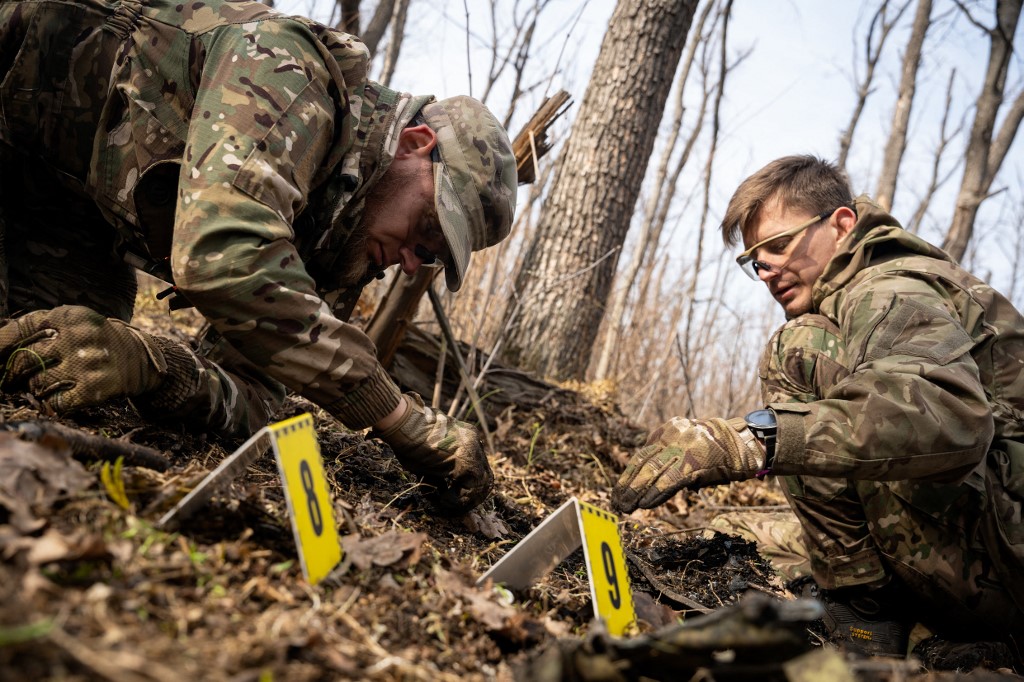
Ukraine’s growing drug market: Dealers to gain new territories
Drug use among Ukrainian soldiers is on the rise, which has boosted the already significant illegal drug trade in Ukraine. Soldiers who become addicted continue consumption even off the battlefield; their condition and substance dependency persist in civilian life as well. Consequently, the drug market is expected to continue expanding to ensure their supply. With Ukraine's accession to the European Union, the market for illicit substances would essentially become borderless, facilitating Ukrainian drug dealers to flood Europe with their products.
Narcotics use among Ukrainian soldiers is driven by multiple factors: physical pain, psychological trauma, pre-existing addiction, and the extreme conditions of warfare all contribute to an increasing number of substance users. While cannabis and legal painkillers and anti-anxiety medications are among the most commonly used substances, alcohol remains the most widespread. The use of amphetamines and synthetic cathinones is also extensive, according to a recent analysis by the Global Initiative, which prefaced its study by sharing a real-life story to illustrate the severity of Ukraine’s drug problem.
A woman living in Kyiv recounted that her brother, who had been fighting on the eastern Ukrainian front for over a year, ended up in the hospital—not due to a battlefield injury but because of a methadone overdose. The last thing he remembered was trying to save a wounded Ukrainian soldier, using a tourniquet to stop the bleeding. He only realized the futility of his efforts when the soldier collapsed, and he was left holding only the soldier’s severed hand. After that, he barely remembered anything except seeking drugs to cope with the shock. He knew exactly what to get, who to contact, and how much the substances would cost.
In Ukraine, particularly on the frontlines, people use whatever they can get their hands on without much discretion.
Some recruits enter the army with existing substance addictions, while others become addicted on the frontlines, getting hooked on narcotics or painkillers.
The use of battlefield painkillers—especially nalbuphine—can lead to addiction within just a few days, and withdrawal can cause severe symptoms and psychological distress. Many use drugs for pain relief, while others turn to substances simply to „escape” from the frontlines. Although drug use among Ukrainian soldiers is well known, users still try to keep their addiction a secret. Many fear that if they are caught, they will lose their salary or combat status. Soldiers also worry that drug use could negatively affect the posthumous compensation their families receive should they be killed. These fears prevent users from seeking help, spur increasing drug consumption and lead to market expansion for drug dealers long-term .
Drugs Are Sourced Through Multiple Channels
The supply of drugs to soldiers occurs through several channels: informal exchanges, family members, volunteers and organized crime networks all play a role in drug distribution. Some soldiers receive packages ordered via Telegram and delivered through private courier services.
Some commanders turn a blind eye to drug use, and in some cases, even facilitate drug deals in exchange for bribes.
Despite the widespread public awareness of the drug problem, and recognition by the Ukrainian government, the country is not addressing the risks of drug consumption among returning frontline soldiers and veterans. This could have serious consequences for reintegration and public safety, according to the study.
The Prevalence of Drug Use Among Soldiers
Data indicates that drug-related offenses affect lower-ranking soldiers, as senior officers and those with more influence are more likely to succeed in avoiding detection and prosecution.
According to a survey-based report shared with GI-TOC, synthetic drugs are one of the most commonly used substances in Ukraine. Among respondents, 38.4% reported using amphetamines (both in powder and crystalline form) at least once a month. Additionally, 16.3% said they had used „salts” at least once a month in the recent period, and 2.3% admitted to daily use.
Drug Use Has Become Commonplace
Cannabis is the most popular drug, with 12.5% of respondents using it daily and 67.4% at least once a month. Pregabalin, a spasmolytic medication used for anxiety and chronic pain relief, ranked second in terms of daily use.
Pregabalin is not illegal in Ukraine, and when used in combination with other drugs, especially opioids, it can lead to addiction.
However, all of this pales in comparison to alcohol consumption, which is also highly significant. The report found that 40.3% of respondents had used drugs before joining the military. The easy availability and low price of drugs have greatly contributed to the development of addiction among users.
The Hungarian newspaper Magyar Nemzet reported that Ukraine has long been an active hub for drug trafficking. Years ago, the country was already considered a relatively important transit point for heroin. In recent years, Ukraine has seen the world’s largest growth in the synthetic drug market, and the already sizable marijuana consumption has also risen significantly. Due to the ongoing war and the instability within the country, law enforcement does not effectively prosecute or punish illegal drug trafficking, allowing the drug market to expand unchecked. If Ukraine joins the European Union, this could pose a serious threat to Europe.
Tags:

